Yu-Cheng Zhou
A Text Classification-Based Approach for Evaluating and Enhancing the Machine Interpretability of Building Codes
Sep 24, 2023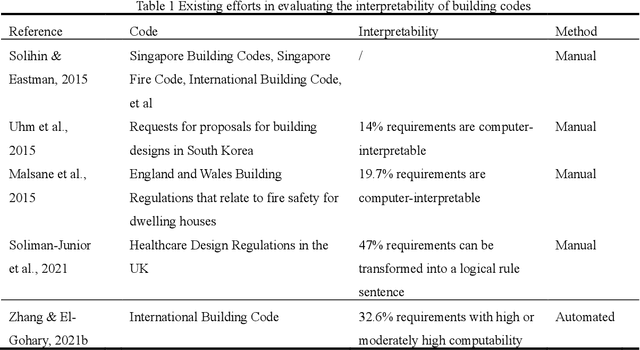

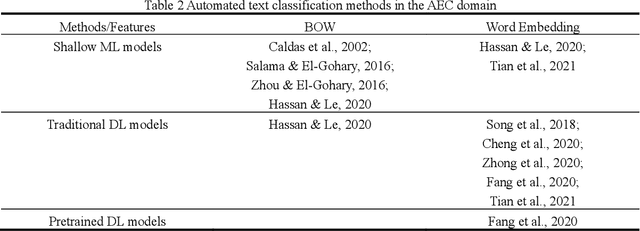
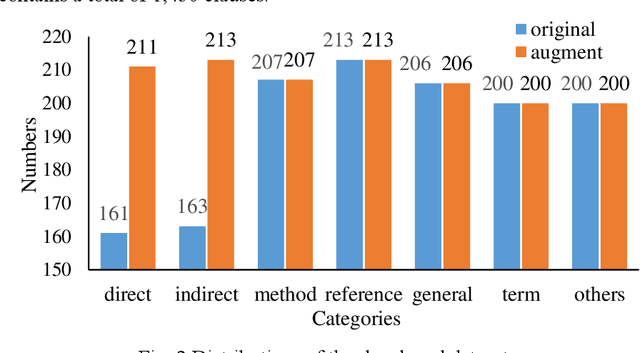
Abstract:Interpreting regulatory documents or building codes into computer-processable formats is essential for the intelligent design and construction of buildings and infrastructures. Although automated rule interpretation (ARI) methods have been investigated for years, most of them highly depend on the early and manual filtering of interpretable clauses from a building code. While few of them considered machine interpretability, which represents the potential to be transformed into a computer-processable format, from both clause- and document-level. Therefore, this research aims to propose a novel approach to automatically evaluate and enhance the machine interpretability of single clause and building codes. First, a few categories are introduced to classify each clause in a building code considering the requirements for rule interpretation, and a dataset is developed for model training. Then, an efficient text classification model is developed based on a pretrained domain-specific language model and transfer learning techniques. Finally, a quantitative evaluation method is proposed to assess the overall interpretability of building codes. Experiments show that the proposed text classification algorithm outperforms the existing CNN- or RNN-based methods, improving the F1-score from 72.16% to 93.60%. It is also illustrated that the proposed classification method can enhance downstream ARI methods with an improvement of 4%. Furthermore, analyzing the results of more than 150 building codes in China showed that their average interpretability is 34.40%, which implies that it is still hard to fully transform the entire regulatory document into computer-processable formats. It is also argued that the interpretability of building codes should be further improved both from the human side and the machine side.
A Multilayer Perceptron-based Fast Sunlight Assessment for the Conceptual Design of Residential Neighborhoods under Chinese Policy
Aug 15, 2023Abstract:In Chinese building codes, it is required that residential buildings receive a minimum number of hours of natural, direct sunlight on a specified winter day, which represents the worst sunlight condition in a year. This requirement is a prerequisite for obtaining a building permit during the conceptual design of a residential project. Thus, officially sanctioned software is usually used to assess the sunlight performance of buildings. These software programs predict sunlight hours based on repeated shading calculations, which is time-consuming. This paper proposed a multilayer perceptron-based method, a one-stage prediction approach, which outputs a shading time interval caused by the inputted cuboid-form building. The sunlight hours of a site can be obtained by calculating the union of the sunlight time intervals (complement of shading time interval) of all the buildings. Three numerical experiments, i.e., horizontal level and slope analysis, and simulation-based optimization are carried out; the results show that the method reduces the computation time to 1/84~1/50 with 96.5%~98% accuracies. A residential neighborhood layout planning plug-in for Rhino 7/Grasshopper is also developed based on the proposed model. This paper indicates that deep learning techniques can be adopted to accelerate sunlight hour simulations at the conceptual design phase.
Earthquake Impact Analysis Based on Text Mining and Social Media Analytics
Dec 12, 2022Abstract:Earthquakes have a deep impact on wide areas, and emergency rescue operations may benefit from social media information about the scope and extent of the disaster. Therefore, this work presents a text miningbased approach to collect and analyze social media data for early earthquake impact analysis. First, disasterrelated microblogs are collected from the Sina microblog based on crawler technology. Then, after data cleaning a series of analyses are conducted including (1) the hot words analysis, (2) the trend of the number of microblogs, (3) the trend of public opinion sentiment, and (4) a keyword and rule-based text classification for earthquake impact analysis. Finally, two recent earthquakes with the same magnitude and focal depth in China are analyzed to compare their impacts. The results show that the public opinion trend analysis and the trend of public opinion sentiment can estimate the earthquake's social impact at an early stage, which will be helpful to decision-making and rescue management.
Text Mining-Based Patent Analysis for Automated Rule Checking in AEC
Dec 12, 2022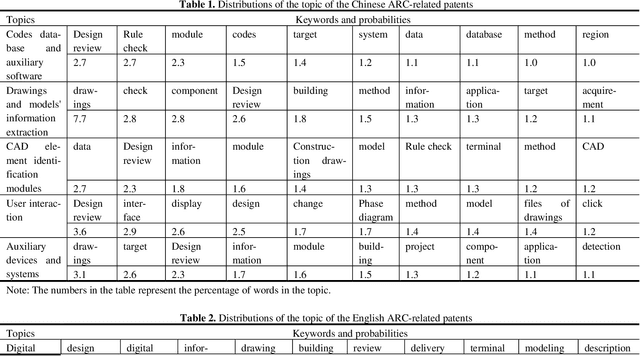
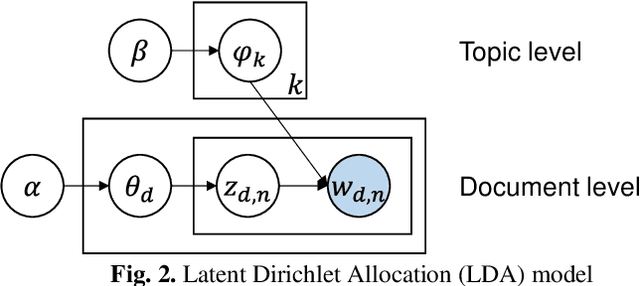
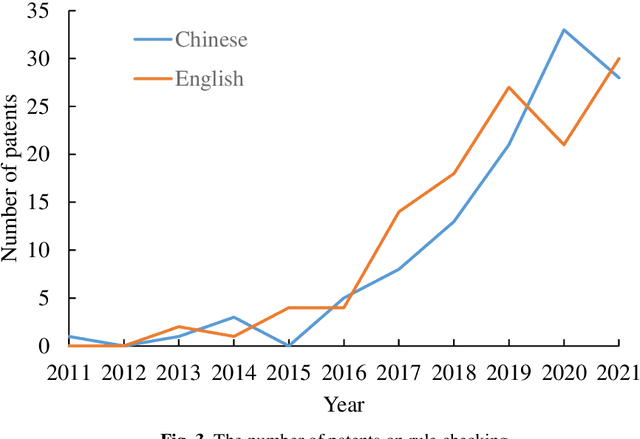

Abstract:Automated rule checking (ARC), which is expected to promote the efficiency of the compliance checking process in the architecture, engineering, and construction (AEC) industry, is gaining increasing attention. Throwing light on the ARC application hotspots and forecasting its trends are useful to the related research and drive innovations. Therefore, this study takes the patents from the database of the Derwent Innovations Index database (DII) and China national knowledge infrastructure (CNKI) as data sources and then carried out a three-step analysis including (1) quantitative characteristics (i.e., annual distribution analysis) of patents, (2) identification of ARC topics using a latent Dirichlet allocation (LDA) and, (3) SNA-based co-occurrence analysis of ARC topics. The results show that the research hotspots and trends of Chinese and English patents are different. The contributions of this study have three aspects: (1) an approach to a comprehensive analysis of patents by integrating multiple text mining methods (i.e., SNA and LDA) is introduced ; (2) the application hotspots and development trends of ARC are reviewed based on patent analysis; and (3) a signpost for technological development and innovation of ARC is provided.
Pretrained Domain-Specific Language Model for General Information Retrieval Tasks in the AEC Domain
Mar 09, 2022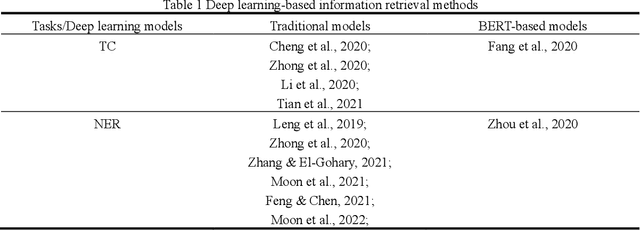
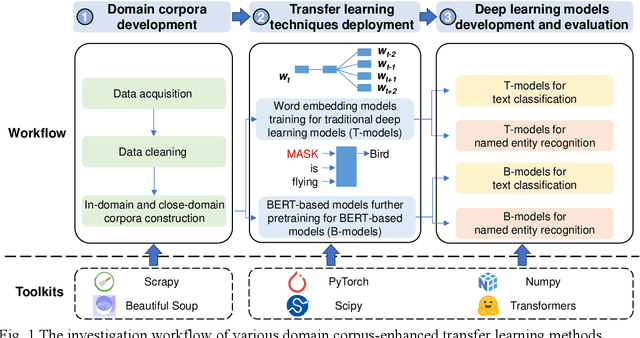
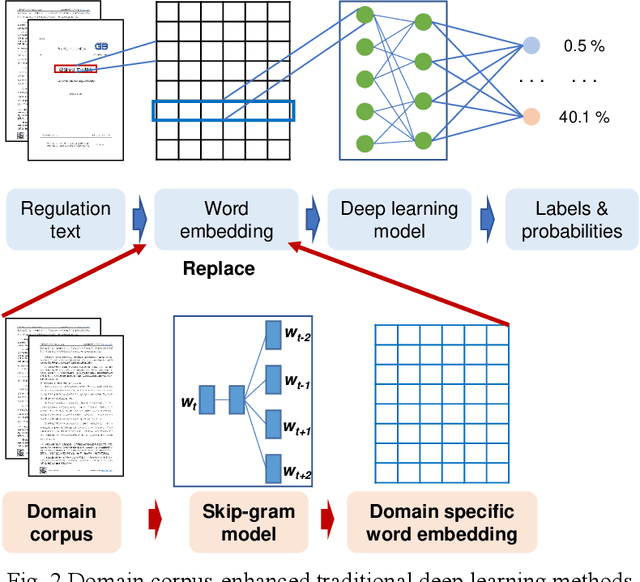

Abstract:As an essential task for the architecture, engineering, and construction (AEC) industry, information retrieval (IR) from unstructured textual data based on natural language processing (NLP) is gaining increasing attention. Although various deep learning (DL) models for IR tasks have been investigated in the AEC domain, it is still unclear how domain corpora and domain-specific pretrained DL models can improve performance in various IR tasks. To this end, this work systematically explores the impacts of domain corpora and various transfer learning techniques on the performance of DL models for IR tasks and proposes a pretrained domain-specific language model for the AEC domain. First, both in-domain and close-domain corpora are developed. Then, two types of pretrained models, including traditional wording embedding models and BERT-based models, are pretrained based on various domain corpora and transfer learning strategies. Finally, several widely used DL models for IR tasks are further trained and tested based on various configurations and pretrained models. The result shows that domain corpora have opposite effects on traditional word embedding models for text classification and named entity recognition tasks but can further improve the performance of BERT-based models in all tasks. Meanwhile, BERT-based models dramatically outperform traditional methods in all IR tasks, with maximum improvements of 5.4% and 10.1% in the F1 score, respectively. This research contributes to the body of knowledge in two ways: 1) demonstrating the advantages of domain corpora and pretrained DL models and 2) opening the first domain-specific dataset and pretrained language model for the AEC domain, to the best of our knowledge. Thus, this work sheds light on the adoption and application of pretrained models in the AEC domain.
 Add to Chrome
Add to Chrome Add to Firefox
Add to Firefox Add to Edge
Add to Edge